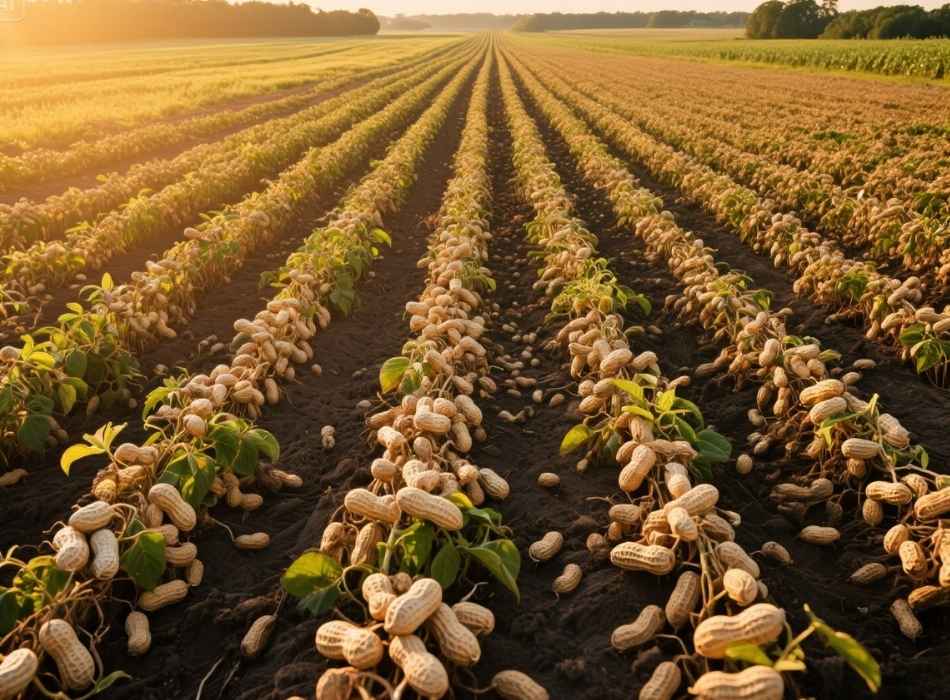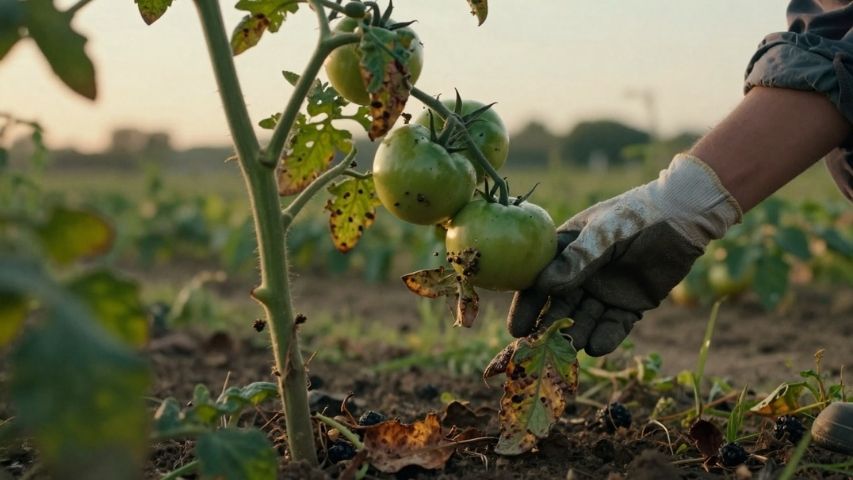Georgia produces more peanuts than any other state in America, accounting for about half of the nation’s total crop. But what makes Georgia’s climate so perfect for growing these humble legumes? The answer lies in a unique combination of temperature, rainfall, soil conditions, and seasonal patterns that create an agricultural sweet spot.
Understanding Georgia’s peanut-growing climate reveals why this southeastern state has become synonymous with peanut production. From the sandy soils of the Coastal Plain to the long, warm growing season, Georgia offers conditions that peanut plants thrive in.
Georgia’s Peanut Growing Regions
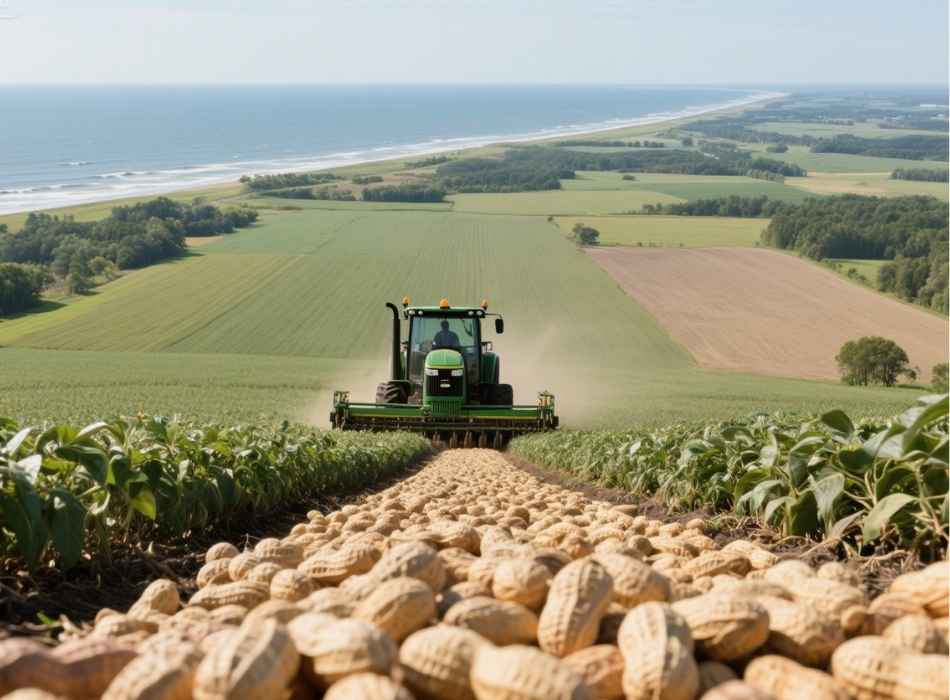
The Coastal Plain Advantage
Most of Georgia’s peanut production occurs in the southern half of the state, particularly in the Coastal Plain region. This area stretches across counties like Mitchell, Baker, Decatur, and Seminole. The region’s elevation ranges from sea level to about 500 feet, creating a relatively flat landscape that’s ideal for mechanised farming.
The Coastal Plain’s sandy loam soils provide excellent drainage while retaining enough moisture for healthy plant growth. These soils warm up quickly in spring, allowing farmers to plant earlier in the season.
Key Growing Counties
Georgia’s top peanut-producing counties include:
- Mitchell County
- Baker County
- Decatur County
- Miller County
- Seminole County
- Early County
These counties consistently produce the highest yields due to their optimal climate conditions and established farming infrastructure.
Temperature Requirements for Peanut Growth
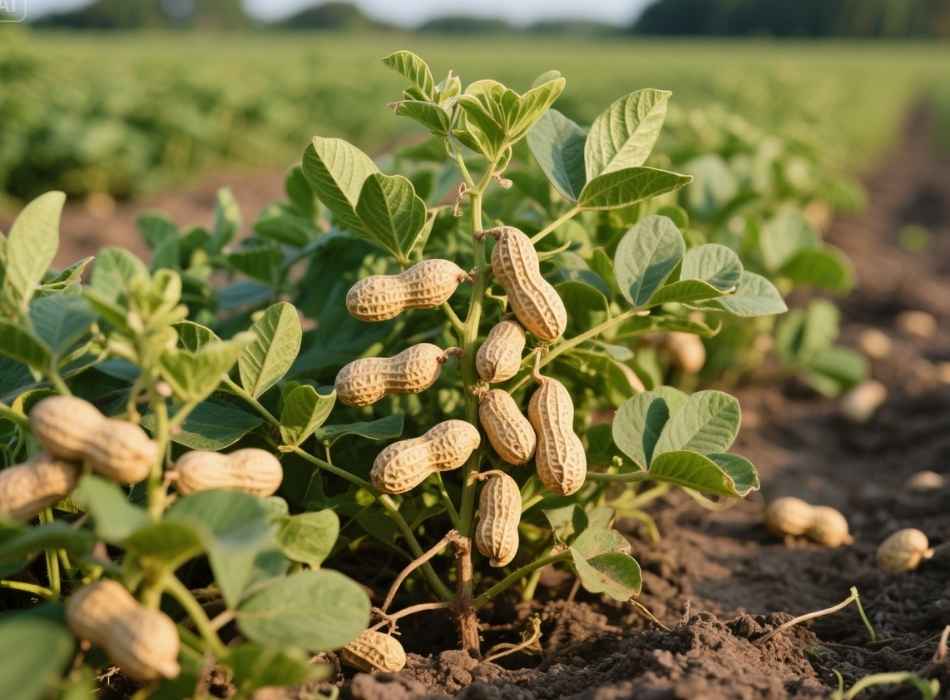
Warm-Season Crop Needs
Peanuts are warm-season crops that require specific temperature conditions throughout their growing cycle. In Georgia, the climate provides exactly what these plants need.
Optimal Growing Temperatures:
- Soil temperature: 65-70°F for planting
- Air temperature: 70-80°F during growing season
- Nighttime temperatures: Above 60°F consistently
Georgia’s climate delivers these temperatures reliably from late April through October. The state’s location in USDA Hardiness Zones 7b to 9a ensures a long enough frost-free period for peanuts to complete their 120-140 day growing cycle.
Seasonal Temperature Patterns
Spring temperatures in Georgia’s peanut region typically reach planting conditions by late April or early May. Summer temperatures remain consistently warm without becoming excessively hot, while fall temperatures stay mild enough for proper pod development and harvest.
The gradual temperature changes between seasons allow peanut plants to transition smoothly through their growth phases without shock from sudden temperature swings.
Rainfall and Water Requirements
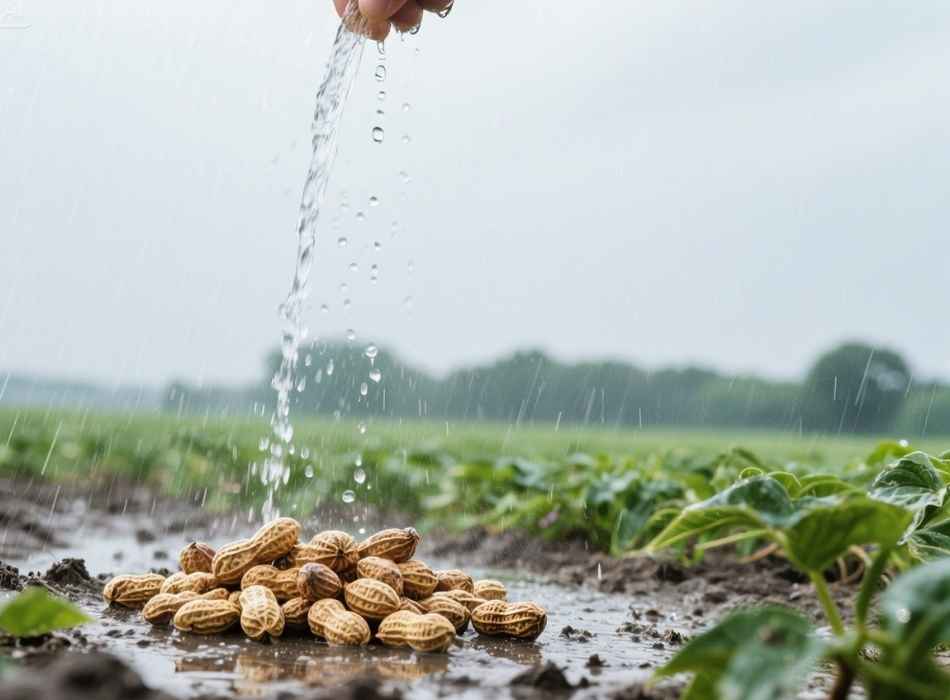
Georgia’s Precipitation Patterns
Georgia’s climate provides natural rainfall that closely matches peanut water requirements. The state receives an average of 45-50 inches of precipitation annually, with most falling during the growing season.
Monthly Rainfall Distribution:
- Spring (March-May): 3-4 inches per month
- Summer (June-August): 4-5 inches per month
- Fall (September-November): 2-3 inches per month
This distribution aligns well with peanut water needs, which are highest during flowering and pod development in summer months.
Managing Water Stress
While Georgia receives adequate rainfall, the timing isn’t always perfect. The state’s peanut farmers often use irrigation systems to supplement natural precipitation during dry spells. The sandy soils that drain well also mean water management becomes crucial during drought periods.
Georgia’s humidity levels, typically ranging from 60-80% during the growing season, help reduce water stress on peanut plants while not creating excessive moisture that could encourage disease.
Soil Conditions and Climate Interaction
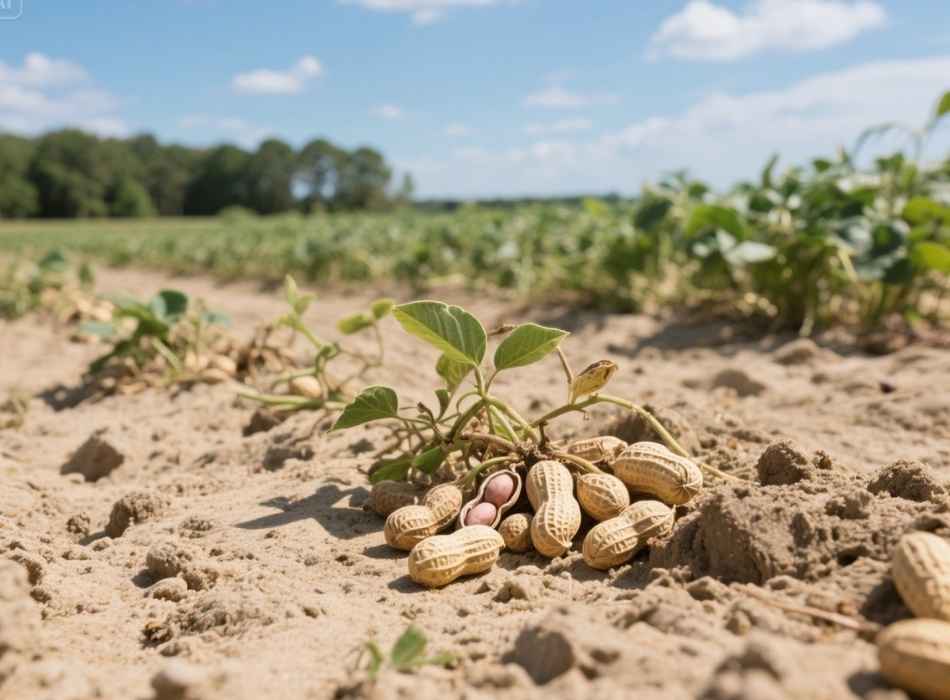
Sandy Loam Soils
Georgia’s peanut-growing regions feature predominantly sandy loam soils with excellent drainage properties. These soils are crucial because peanuts are legumes that develop their pods underground.
The climate and soil work together in several ways:
- Warm temperatures heat sandy soils quickly
- Good drainage prevents root rot during rainy periods
- Loose soil structure allows easy pod development
- Organic matter from previous crops improves soil structure
pH and Nutrient Availability
Georgia’s natural soil pH in peanut-growing areas typically ranges from 5.8 to 6.2, which is ideal for peanut production. The warm, humid climate accelerates organic matter decomposition, making nutrients more available to plants.
Growing Season Length and Frost Dates
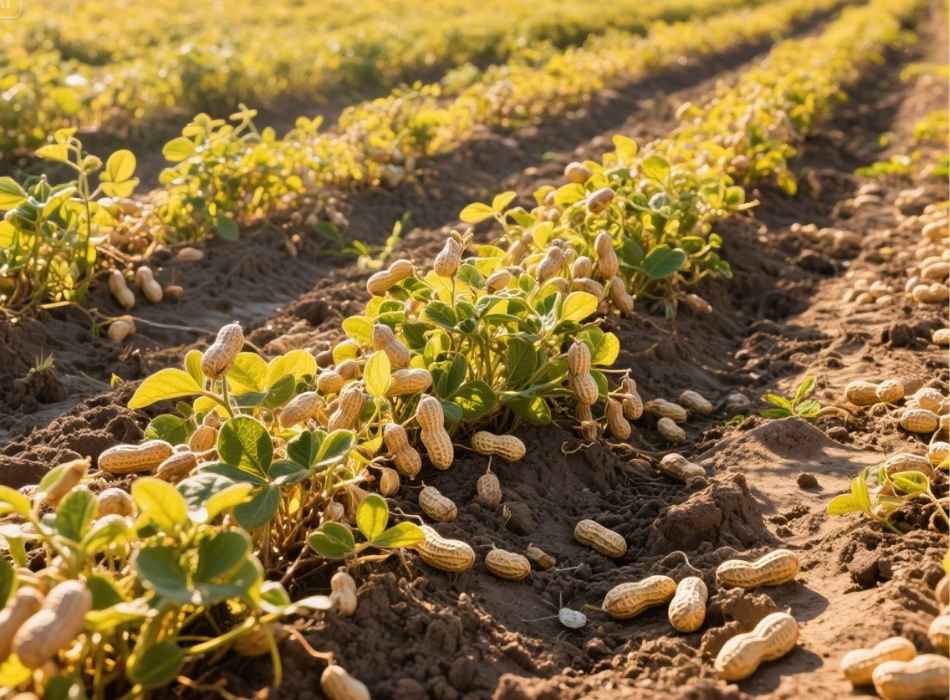
Extended Growing Season
Georgia’s climate provides one of the longest growing seasons in the United States for peanut production. The average frost-free period in peanut-growing areas extends from mid-April to late October or early November.
Key Dates:
- Last spring frost: Mid to late April
- First fall frost: Late October to early November
- Growing season length: 180-200 days
This extended season allows peanuts to mature fully and develop maximum oil content, which is crucial for quality.
Harvest Timing Advantages
The long season means Georgia farmers can plant when soil conditions are optimal rather than rushing due to frost concerns. Similarly, harvest timing can be based on crop maturity rather than weather pressures, leading to better quality peanuts.
Humidity and Disease Management
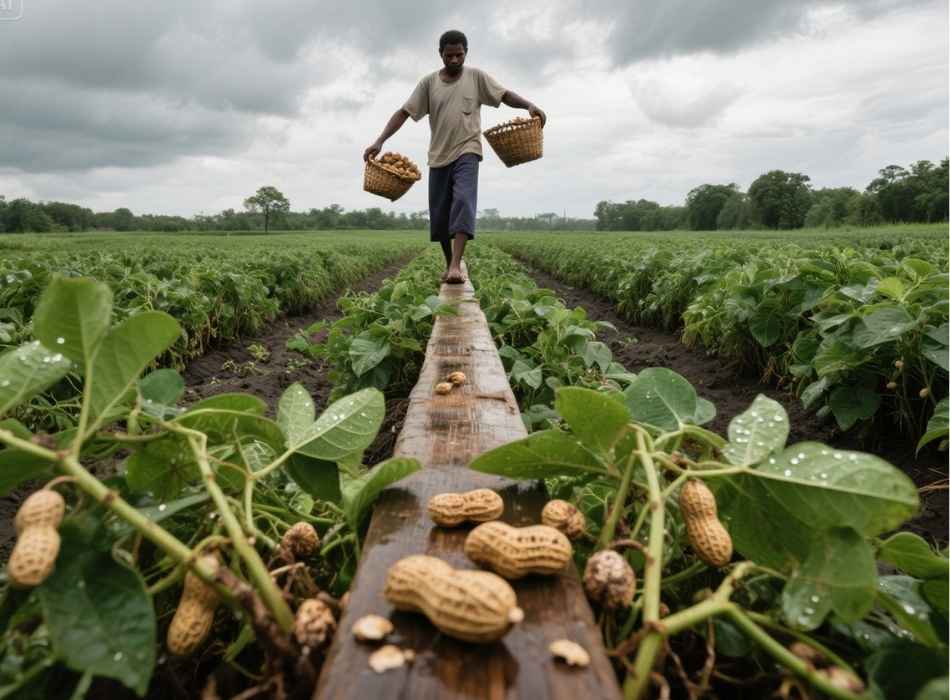
Balancing Act
Georgia’s humid subtropical climate creates both advantages and challenges for peanut production. While humidity helps prevent water stress, it can also encourage fungal diseases.
Successful peanut production in Georgia requires managing this humidity through:
- Proper plant spacing for air circulation
- Fungicide applications when necessary
- Crop rotation to break disease cycles
- Selecting disease-resistant varieties
Natural Disease Pressure
The warm, humid conditions that peanuts love also favour certain diseases like leaf spot and white mould. However, Georgia’s farming community has developed effective management strategies that work with the climate rather than against it.
Seasonal Weather Patterns
Spring Planting Conditions
Georgia’s spring weather typically provides ideal planting windows. Soil temperatures rise steadily, and rainfall is usually adequate but not excessive. The relatively stable weather patterns allow for consistent planting schedules.
Summer Growing Conditions
Summer weather in Georgia features warm days, mild nights, and regular afternoon thunderstorms that provide natural irrigation. This pattern supports steady peanut growth and development.
Fall Harvest Weather
Fall weather in Georgia is typically dry and mild, providing excellent conditions for peanut harvest. The combination of warm days and cool nights helps peanuts reach optimal maturity levels.
Why Georgia Dominates Peanut Production
Georgia’s climate represents the perfect storm of conditions for peanut production. The state’s warm temperatures, adequate rainfall, long growing season, and suitable soils create an environment where peanuts not only survive but thrive.
The consistency of these climate conditions year after year has allowed Georgia farmers to refine their production methods and develop expertise that keeps the state at the forefront of American peanut production. This climate advantage, combined with modern farming techniques and strong agricultural infrastructure, ensures Georgia’s continued leadership in peanut production.
For anyone interested in agricultural geography or crop production, Georgia’s peanut climate serves as an excellent example of how natural conditions can create agrarian specialisation. The state’s farmers have learned to work with their climate advantages while managing the challenges, creating a sustainable and profitable peanut industry that feeds America and the world.







